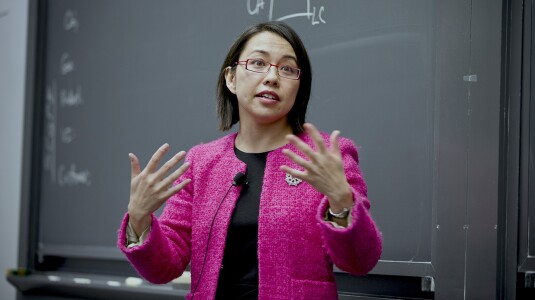-
Journal of Political Economy2021Calibration means that forecasts and average realized frequencies are close. We develop the concept of forecast hedging, which consists of choosing the forecasts so as to guarantee that the expected track record can only improve. This yields all the calibration results by the same simple basic argument while differentiating between them by the forecast-hedging tools used: deterministic and fixed point based
-
COLING 20202020End-to-end neural data-to-text (D2T) generation has recently emerged as an alternative to pipeline-based architectures. However, it has faced challenges generalizing to new domains and generating semantically consistent text. In this work, we present DATATUNER, a neural, end-to-end data-to-text generation system that makes minimal assumptions about the data representation and target domain. We take a two-stage
-
ICML 20202020We propose a reward function estimation framework for inverse reinforcement learning with deep energy-based policies. We name our method PQR, as it sequentially estimates the Policy, the Qfunction, and the Reward function. PQR does not assume that the reward solely depends on the state, instead it allows for a dependency on the choice of action. Moreover, PQR allows for stochastic state transitions. To
-
AEA 20202020Inflation indices are important inputs into measuring aggregate productivity and cost of living and conducting monetary and economic policy. We want to contribute to the science of inflation measurement based on quality-adjusted (hedonic) prices. The main challenges today are: (1) the global trade environment (millions of products); (2) frequent price changes; (3) extremely high turnover for some products
-
Journal of Business & Economics Statistics2019This paper investigates the large sample properties of the variance, weights, and risk of high-dimensional portfolios where the inverse of the covariance matrix of excess asset returns is estimated using a technique called nodewise regression. Nodewise regression provides a direct estimator for the inverse covariance matrix using the Least Absolute Shrinkage and Selection Operator (Lasso) of Tibshirani
Related content
-
February 28, 2023How the former astrobiology professor is charting new territory as a scientist for Amazon Flex.
-
February 8, 2023How her background helps her manage a team charged with assisting internal partners to answer questions about the economic impacts of their decisions.
-
December 9, 2022Amazon provided funding for two-week workshop led by Nobel Prize winner Thomas Sargent.
-
October 17, 2022Tatevik Sekhposyan, Amazon Scholar and Texas A&M University professor, enjoys the flexibility of economics and how embracing uncertainty can enhance prediction.
-
September 13, 2022Paper introduces a unified view of the learning-to-bid problem and presents AuctionGym, a simulation environment that enables reproducible validation of new solutions.
-
August 5, 2022How the Amazon Supply Chain Optimization Technologies principal economist uses his expertise in time series econometrics to forecast aggregate demand.







